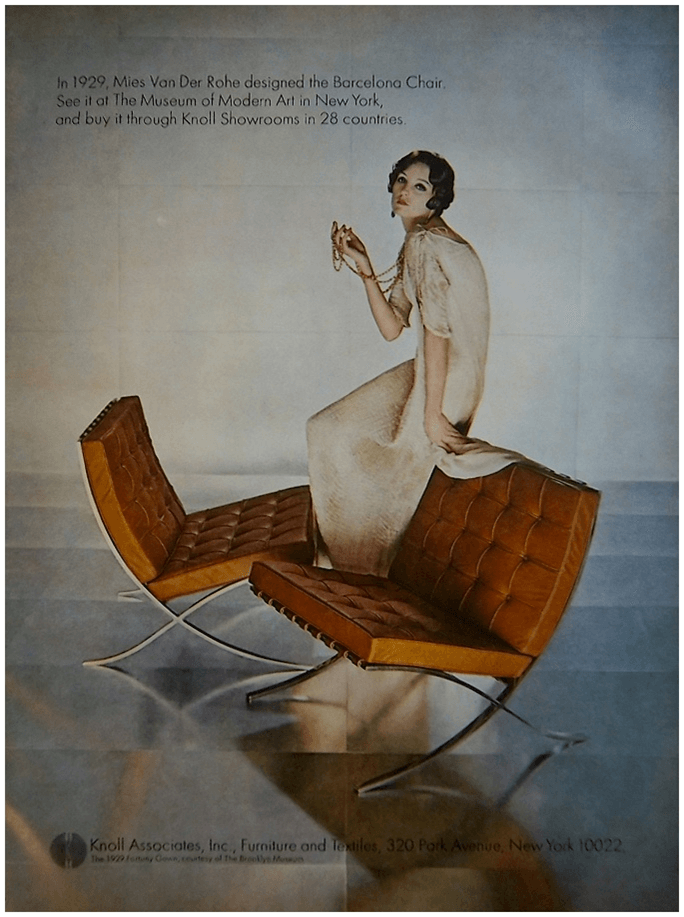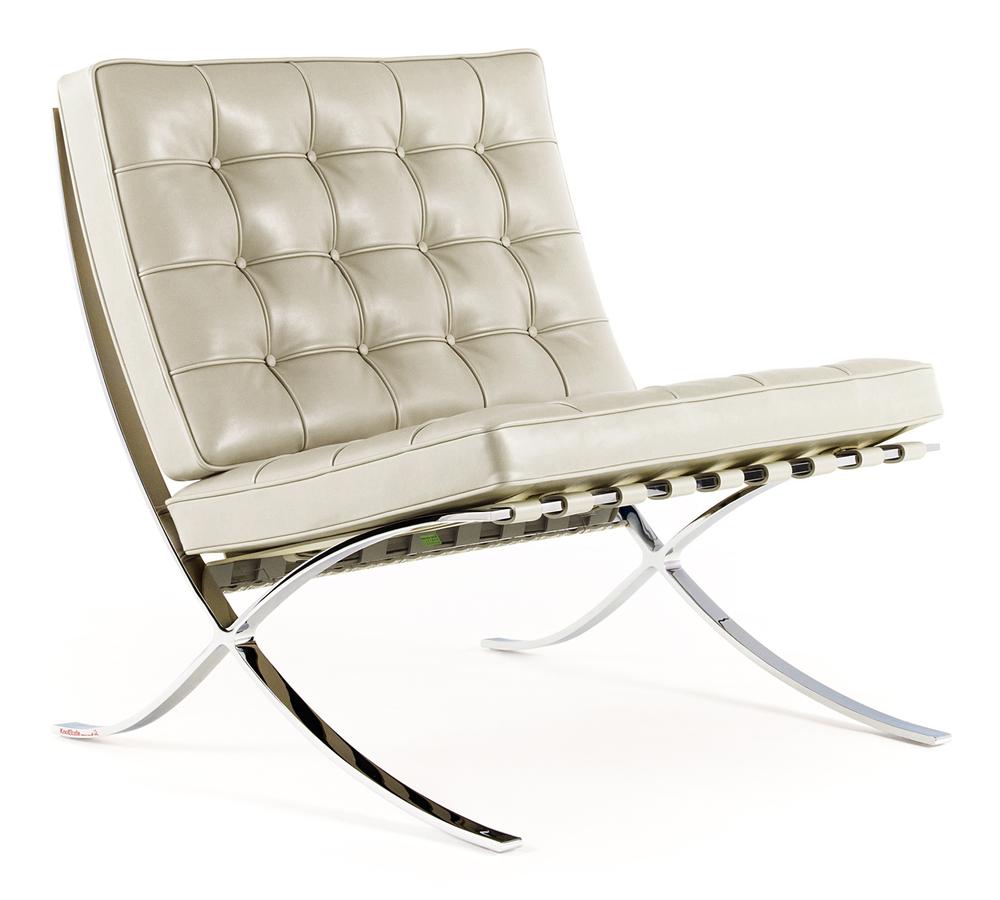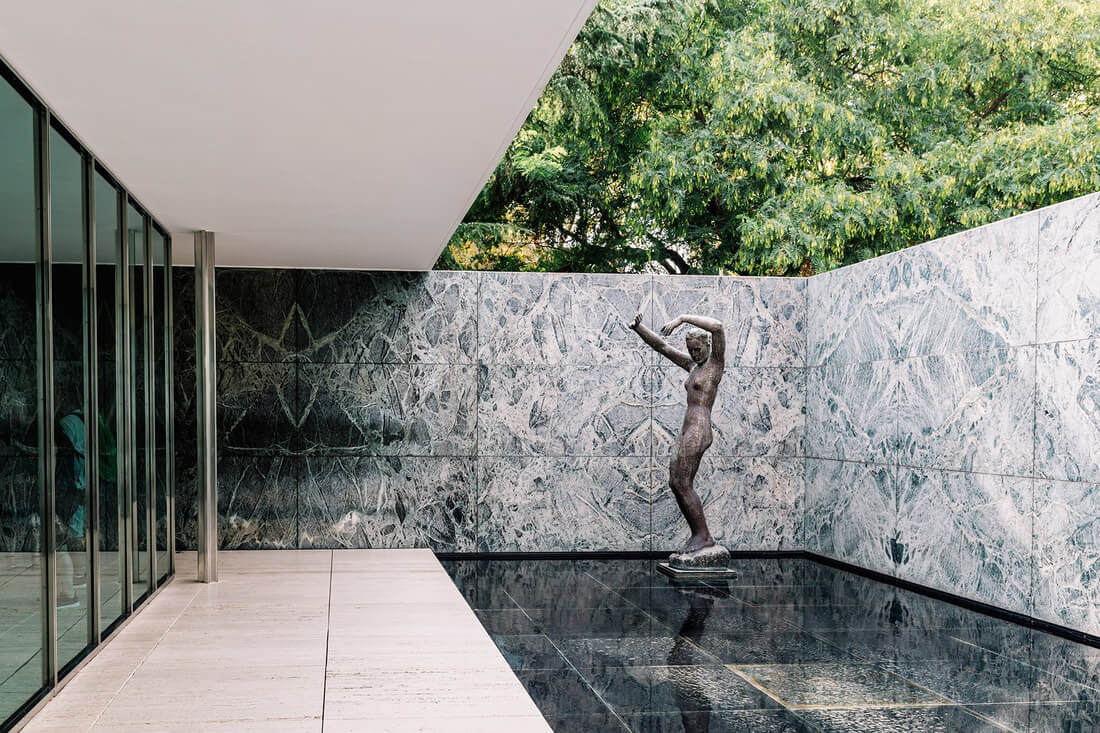Like everything else that Mies did, it revealed his signature notion: an aspiration to excellence. The pavilion was a perfect cube, constructed of luxurious materials such as marble, golden onyx, and tinted glass, and was the stage where the Barcelona Chair had its debut. The chair was intended for the King and Queen of Spain, who presided over the opening ceremonies. Just like the pavilion itself, the chair embodies the Mies principle that “anything less than perfection is unacceptable.” While the Bacelona Chair and its stainless steel allure manifests a machine-age look, it is actually a handcrafted object. Its form was inspired by antiquity: the Curule Chair, which was used by Romans, and immortalized in frescoes. Ironically, the Barcelona Chair did not enjoy great popularity in Germany, but it swept America. It was only after Knoll acquired the license in 1953, from Mies himself, that the Barcelona Chair rose to the forefront of design celebrity. It became the most popular chair in American lobbies, reception rooms, and office spaces.
Celebrating 90th: The Barcelona Chair
No other single chair has captured the spirit of modernism more than the Barcelona Chair, considered one of the best-designed chairs of all time. While commonly believed to be created by Mies van der Rohe, the Barcelona Chair was in fact a collaboration with his colleague and lover, Lilly Reich. The two created this chair for the 1929 German Pavilion at Barcelona’s International Exposition. The German Pavilion held no trade exhibits, but rather served as an exhibition in its own right, showcasing the achievements of the Modern Movement in Germany. Acknowledged as a quintessential modernist building, the pavilion became an influential prototype of the minimalist open plan for decades to come.





